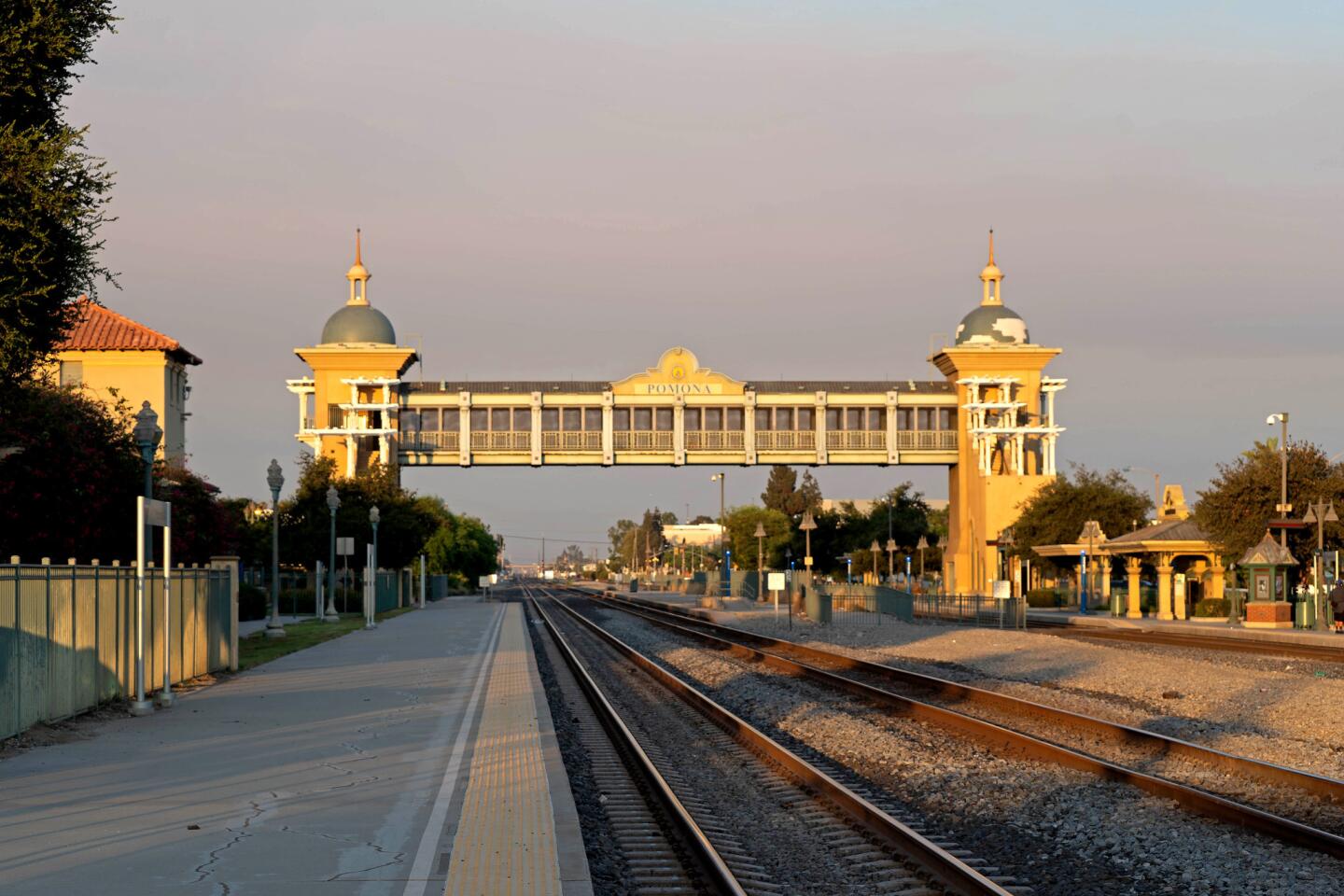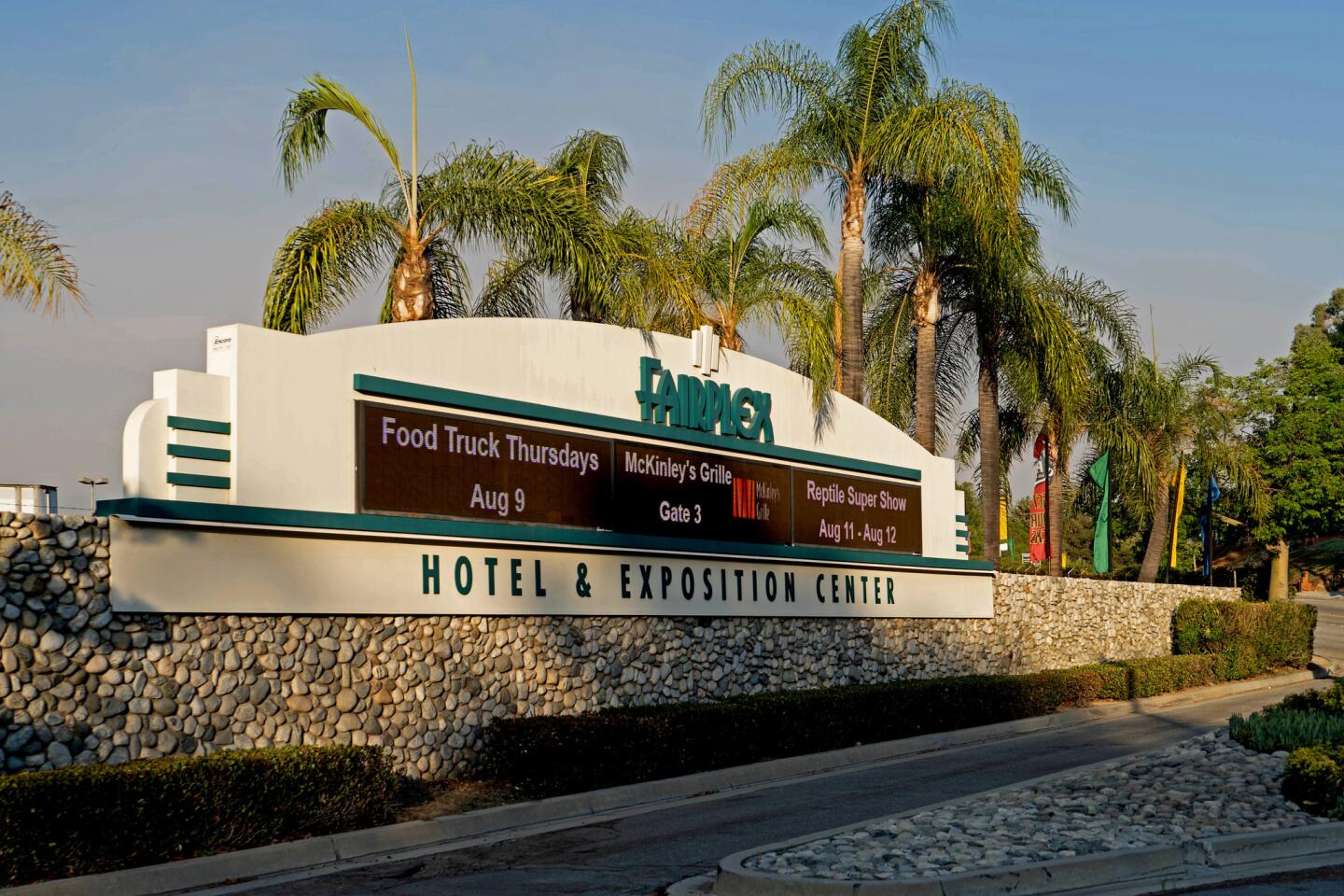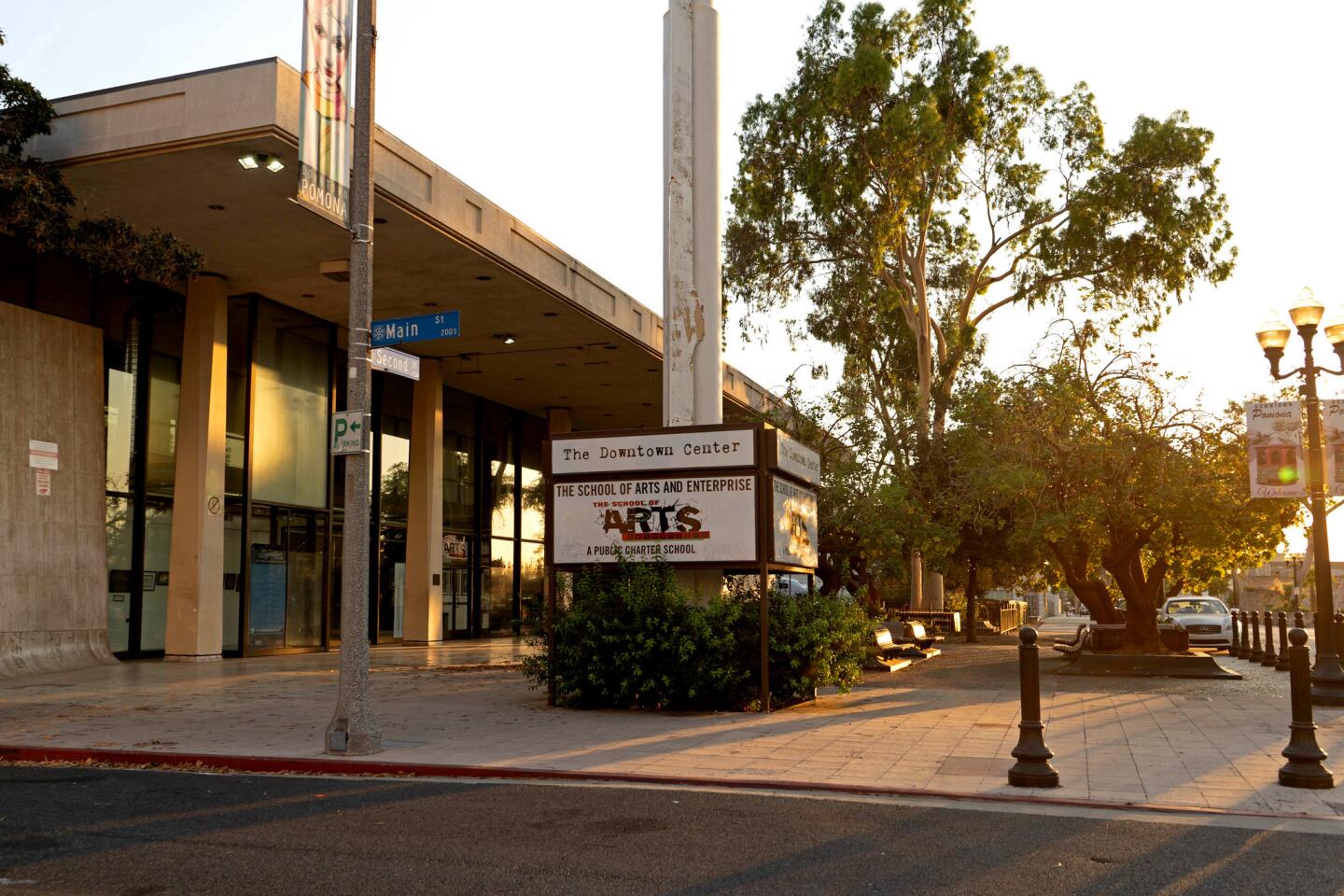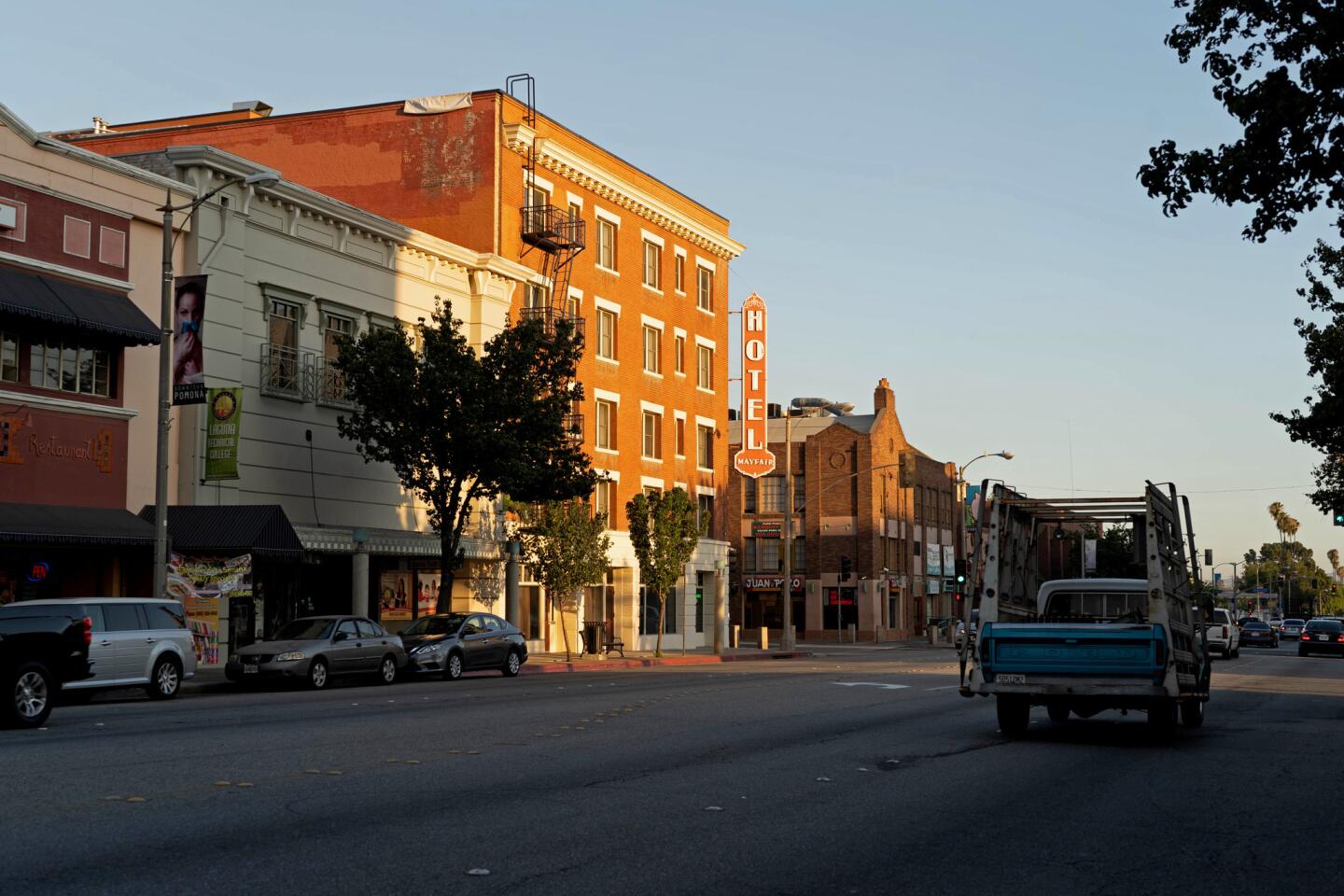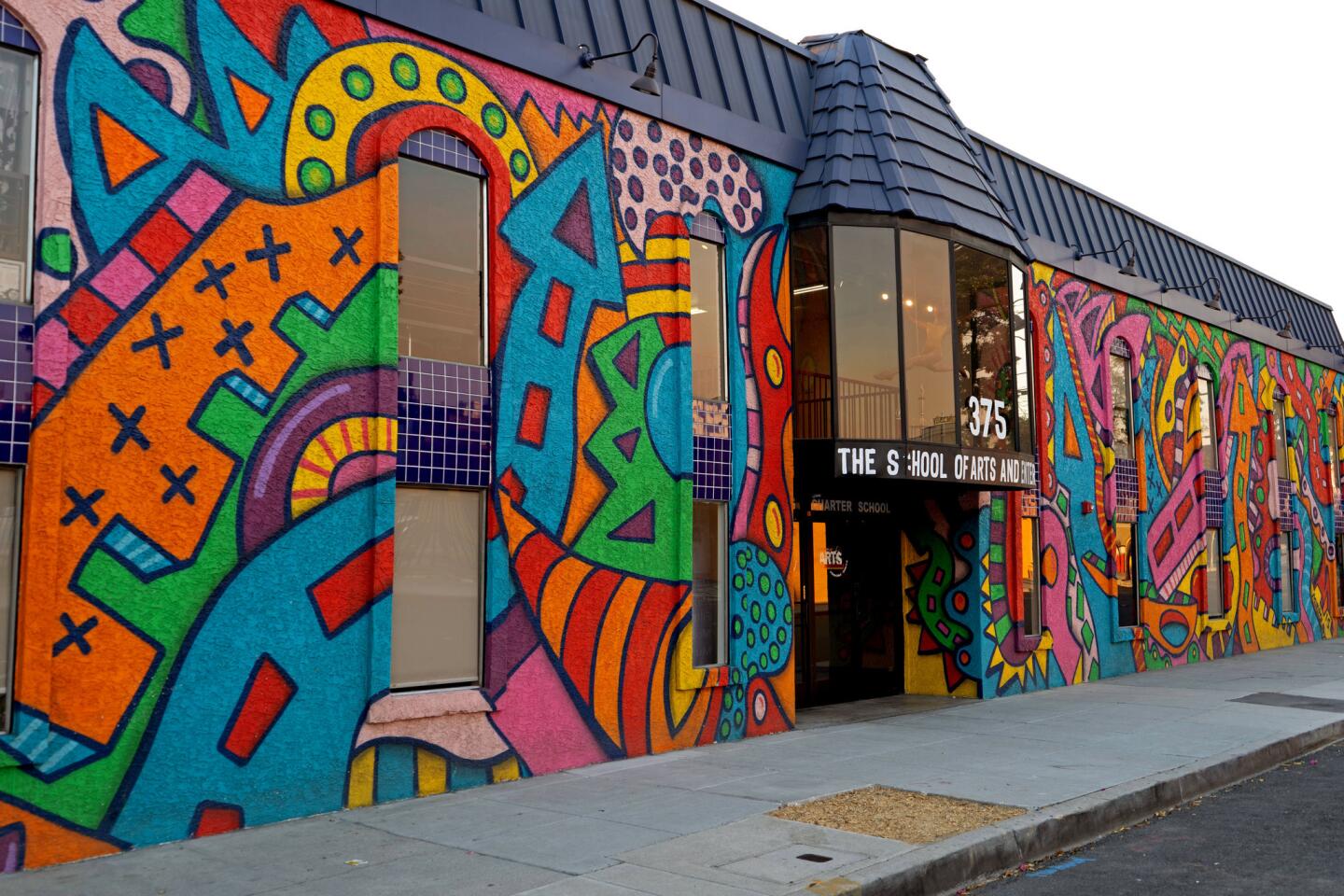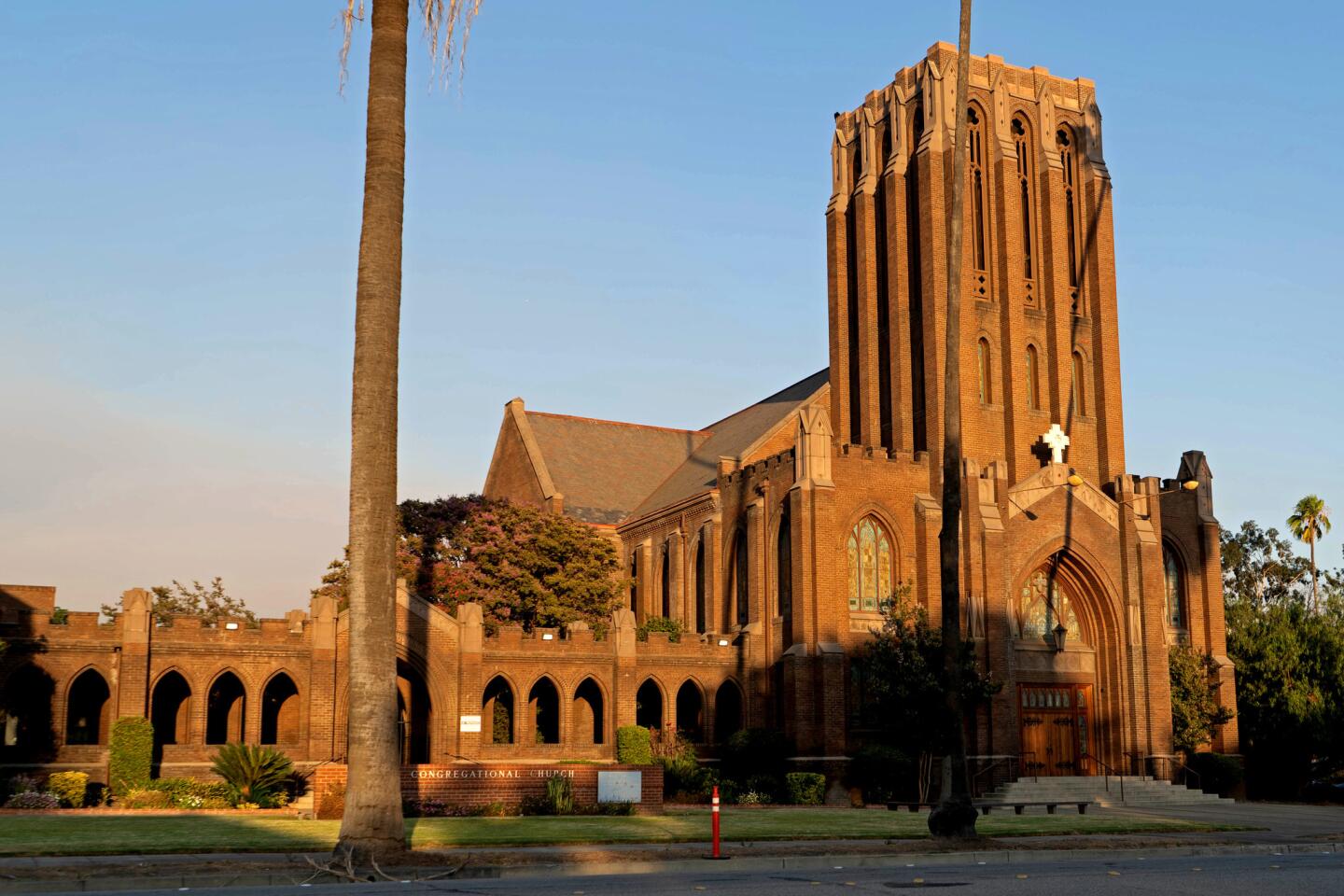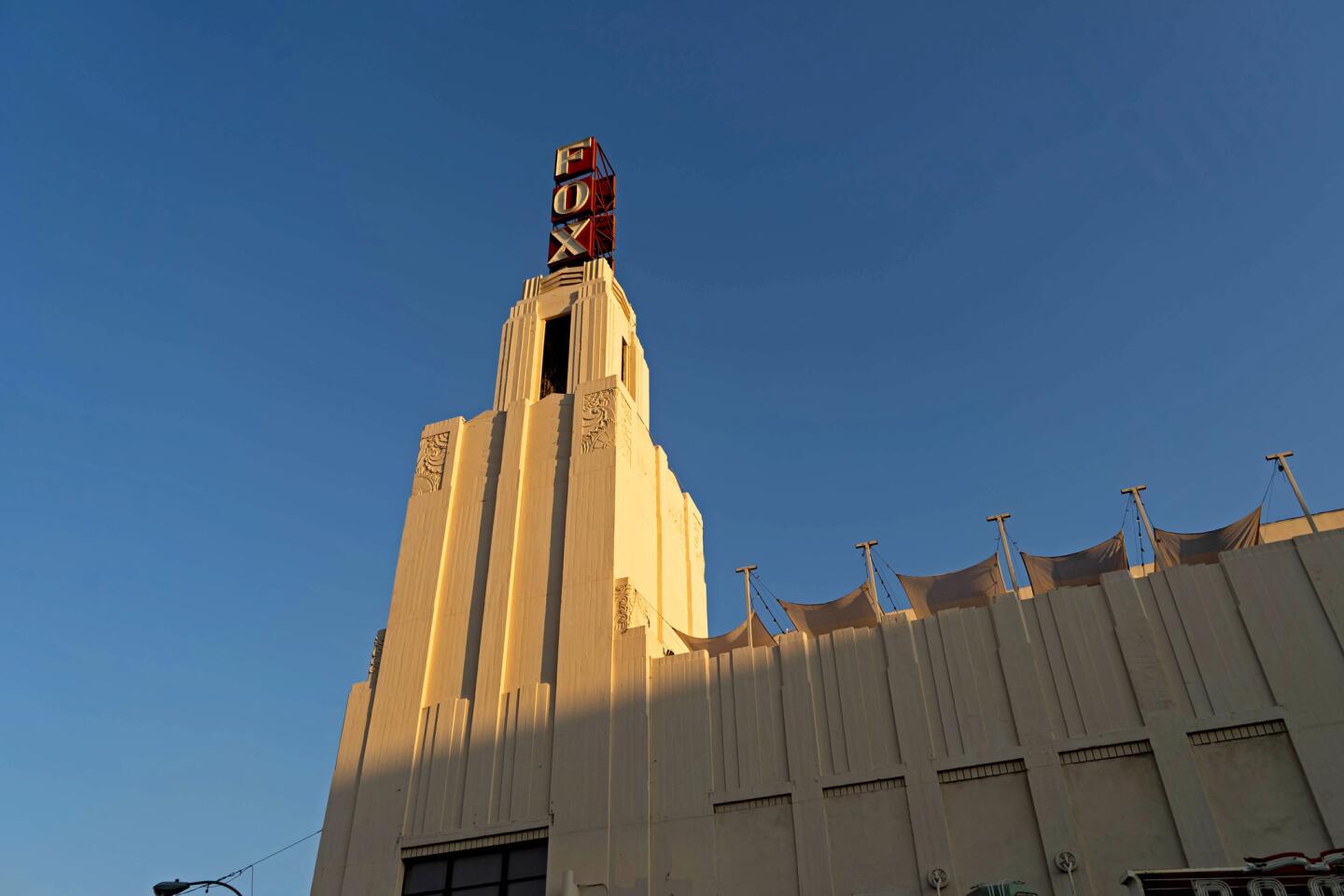Neighborhood Spotlight: Pomona’s transition from oranges to funnel cakes has been mythical, like its namesake
- Share via
As perhaps befits a midsize city far from the region’s coastal urban core, Pomona has cannily counterprogrammed against its glitzy neighbor to the west with distinctly unflashy diversions such as the county fair and a motor speedway.
Not that the intentions of those who founded the town weren’t grandiose.
Whereas many cities that trace their histories back to the late 1800s embraced the mythos of Alta California when it came to naming their nascent metropolises, the founders of Pomana reached even farther back, plucking an obscure Roman goddess out of the pantheon and dropping her on the city seal.
The name was fitting. Pomona was the goddess of fruit, and the city for which she was named would soon become one of the capitals of Southern California’s Orange Empire, a fragrant, unbroken sea of citrus trees stretching from Riverside to the San Fernando Valley.
Grand homes sprang up around Pomona to house the new citrus bourgeoisie, as well as old-money Easterners looking for a winter redoubt from which to send “Wish you were here” postcards festooned with brightly colored illustrations of oranges ripening in the sun to their shivering relatives back home.
The Orange Empire had such a hold on the public imagination that the Pacific Electric Railway ran excursion trolleys all the way from L.A. to the Pomona Valley, just so tourists could clap eyes on the groves of exotic trees.
It was a testament to Pomona’s esteemed status as an agricultural hub that the city was able, after six previous failures by other municipalities, to successfully stage the first Los Angeles County Fair in 1922.
The fair was a success, and in 1923 the city built permanent exhibition halls on the old barley field which would become the Los Angeles County Fairgrounds, future home of funnel cake burritos and Loverboy reunion shows.
Agriculture doesn’t drive the economy of Pomona anymore. Institutional employers such as Cal Poly Pomona provide the bulk of jobs, and the Orange Empire excursion trolleys have been supplanted by Metrolink commuter trains to serve those who work in L.A.
Neighborhood highlights
Affordable history: Pomona’s historic neighborhoods are full of Craftsman homes that would easily run into the high six figures in L.A., but can be had for almost half the price.
Take the train: Commuters in Pomona not only can avail themselves of Metrolink trains to L.A. and Riverside, they will also soon be getting an extension of the Metro Gold Line to Pasadena.
Higher ed: Cal Poly Pomona and the nearby Claremont Colleges provide convenient access to education opportunities and academic employment.
Neighborhood challenge
Going the distance: Great homes are more affordable in Pomona, but those savings come at the cost of a long commute to Los Angeles, even on the train.
Expert insight
Lilyvette Rodriguez of Excel Realty has 28 years of experience in Pomona. Thanks to investments from Western University and a resurging downtown arts district, she describes it as a city on the rise.
“During the last 7 to 8 years, the city loosened its criteria on live-work units, so artists have been purchasing lofts,” Rodriguez said. “That, combined with Pomona natives returning to live here after going to college, has infused the city with a younger population.”
It’s still a family-oriented area, but the growing number of young people — along with the revamped Art Deco-vibe Fox Theater — has created a nightlife scene.
“Pomona is a gateway city to the Inland Empire,” Rodriguez said, noting that its placement right on the edge of L.A. County gives it a unique advantage.
Los Angeles allows significantly higher FHA loan limits compared with the neighboring counties of San Bernardino and Riverside. For first-time home buyers, that makes it an enticing landing spot.
Market snapshot
The majority of Pomona is split between three ZIP Codes: 91766, 91767 and 91768. For all three, the median sales price for single-family homes in June was in the $400,000 range, and they all experienced year-over-year growth, according to CoreLogic.
In the 91766 ZIP Code, based on 32 sales, the median sales price for single-family homes in June was $411,000, up 13.2% year over year, according to CoreLogic.
In the 91767 ZIP Code, based on 29 sales, the median sales price for single-family homes in June was $436,000, up 17% year over year, according to CoreLogic.
In the 91768 ZIP Code, based on 24 sales, the median sales price for single-family homes in June was $417,000, up 4.3% year over year, according to CoreLogic.
Report card
Of the 36 public schools within the Pomona boundaries, Condit Elementary scored the highest on the 2013 Academic Performance Index at 930.
The city also holds a pair of high-performing high schools: International Polytechnic High, which scored 879, and Diamond Ranch High, which scored 814.
Times staff writer Jack Flemming contributed to this report.
More to Read
Sign up for Essential California
The most important California stories and recommendations in your inbox every morning.
You may occasionally receive promotional content from the Los Angeles Times.
